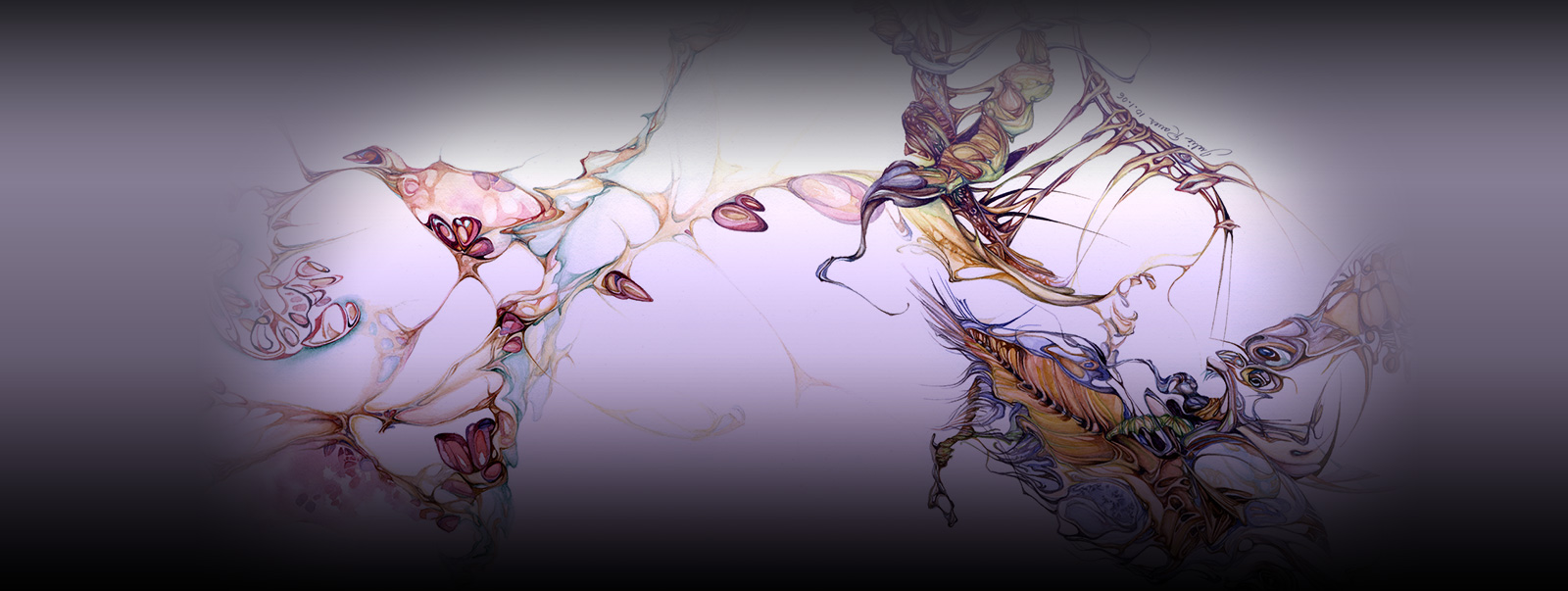Through the traditions which have generated the great art objects of Asia, have come not simply the objects themselves, but more important the great evocations embedded within them and the processes that generated them. So great in fact that without exaggeration their impact may be unparalleled in the history of man.
It is believed that all or most of the production and the ideas behind them are to be relegated to history for safe keeping. However embodied at the heart of many of these great traditions are vital procedures that can form a strong architecture for how to proceed in our contemporary idiom.
The work of this exhibition is an attempt to demonstrate not a continuity of traditions past, but a contemporary evaluation many of the processes and procedures behind these traditions, as they are operating within the mind and in the work of the artist Julie Rauer.
Though Asia’s artistic traditions are of an almost infinite diversity and multiplicity many exhibit a special and uniquely valuable sensitivity toward nature and its mysteries, that in today’s setting are as keen at revealing depth and insight as are any of today’s artistic or scientific operations.
Another important trait found in many Asian objects is their intimacy. This portrays two important characteristics, that are indispensable today. The first is the relationship between the viewer and the object. In this case this relationship is immediately intensified, making the desire to study the object to create a deep bond, a natural tendency. This has a very important social role since we are currently residing in a time when the value of art is determined by its decorative, popular, investment or entertainment potential. We have the opportunity to halt this hollowing out process by establishing arts primacy as a conveyor of meaning. The second benefit borne of intimacy and also related to nature is the heightened awareness that the observed stillness perceived in the object is both illusion, and allusion to a state of nature which is motion. This refers directly to the greatest cumulative achievement of the arts of Asia, much more found than anything to be found in the works of the West with the notable exception of the philosophic tradition of Ancient Greece. Both in Asia and in Greece were they capable of seeing motion in all its diverse richness, not simply to change position or to augment itself, but the deeper metaphysical studies of motion as alteration, generation, and death. Now as the world has nearly a century of emerging from a western obsession with a static cosmology, intimacy is well poised to aid us as the study of motion once again moves to center stage.
The engines employed in the Asian traditions depended greatly on the beliefs of the specific cultures involved and this will always hold vast interest for the philologist and the historian, but as the mythologies and religious beliefs that were the catalysts for the creation of the great Asian objects and their traditions these are now to give way to the examinations of science and rationality, which breathes new life into these time honored procedures. This will be the opportunity to write the essays of our investigations into the nature of things. It is within this framework that the works of this artist in this exhibition are humbly offered.





COMMENTS
There are no comments yet!